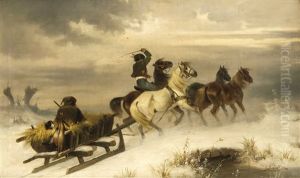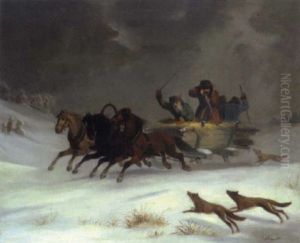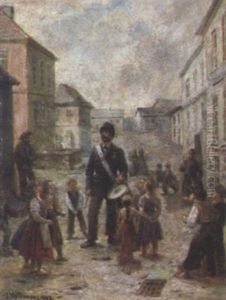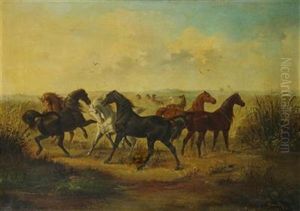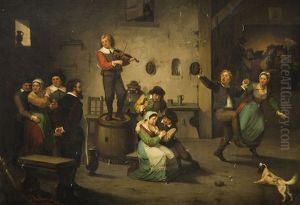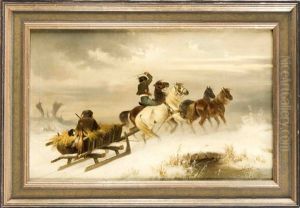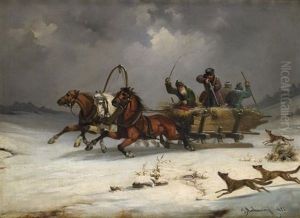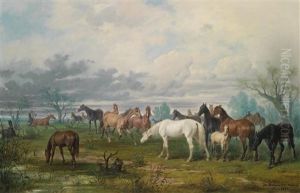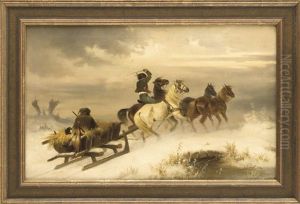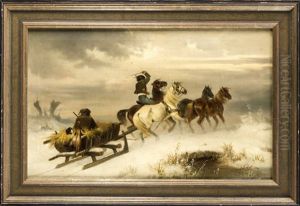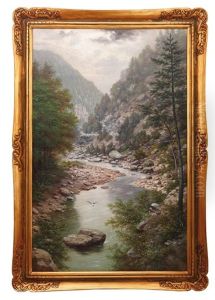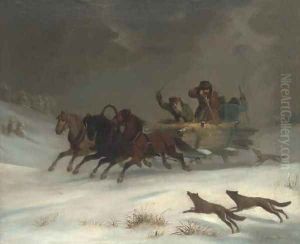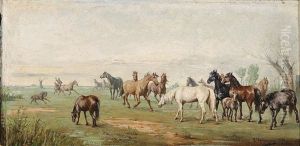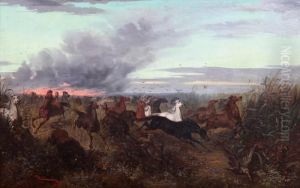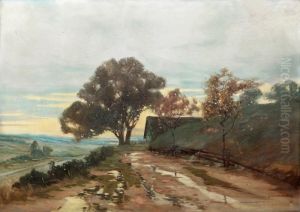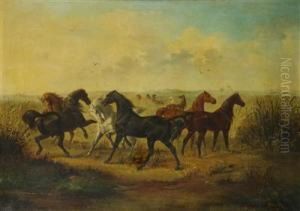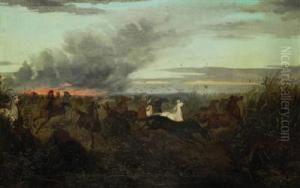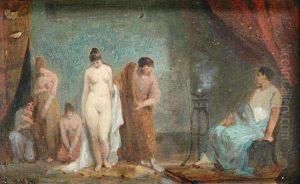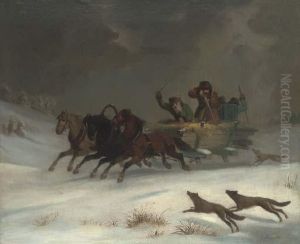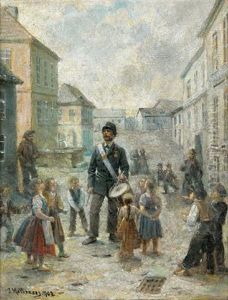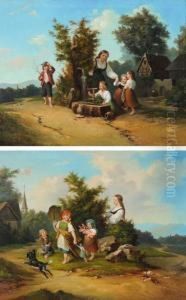Josef Mathauser Paintings
Josef Mathauser was a renowned Czech painter, born on March 28, 1846, in the small town of Třebíč in the historical region of Moravia, which is now part of the Czech Republic. He was particularly noted for his historical and mythological paintings, as well as for his work as an educator in the field of art.
Mathauser showed an early talent for painting and pursued his interest in art at the Academy of Fine Arts in Prague. His education continued in Munich, which was a major center for art and culture in the 19th century. Mathauser's work was heavily influenced by the academic style of painting, which emphasized classical techniques and subjects drawn from history and mythology. He was also influenced by the Romantic movement, which was characterized by an emphasis on emotion and individualism.
After completing his studies, Mathauser returned to Bohemia, where he became a significant figure in the local art scene. He created large-scale paintings with elaborate detail and vibrant colors, which earned him considerable acclaim. His works often depicted scenes from Czech history, contributing to the burgeoning sense of national identity in the region as the Czech people began to seek greater autonomy within the Austro-Hungarian Empire.
Mathauser's historical paintings include epic scenes such as 'The Hussite Preacher Jan Želivský in Prague' and 'Master Jan Hus Preaching at the Bethlehem Chapel: Truth Prevails,' which reflect his interest in Czech history and national pride. Beyond his historical works, Mathauser also painted religious subjects, portraits, and landscapes. He was a master at capturing the grandeur of nature and the human form with a romantic sensibility.
In addition to his career as a painter, Mathauser also played an important role in art education. He was a professor at the Academy of Fine Arts in Prague, where he taught many students who would go on to become prominent artists themselves.
Josef Mathauser continued to work and teach until his death on September 15, 1917, in Prague. His legacy lives on through his contributions to Czech art and culture, and his works are still celebrated for their technical skill and their role in the development of Czech national identity. Mathauser remains an esteemed figure in the history of Czech art, and his paintings can be found in various museums, galleries, and collections both in the Czech Republic and abroad.
